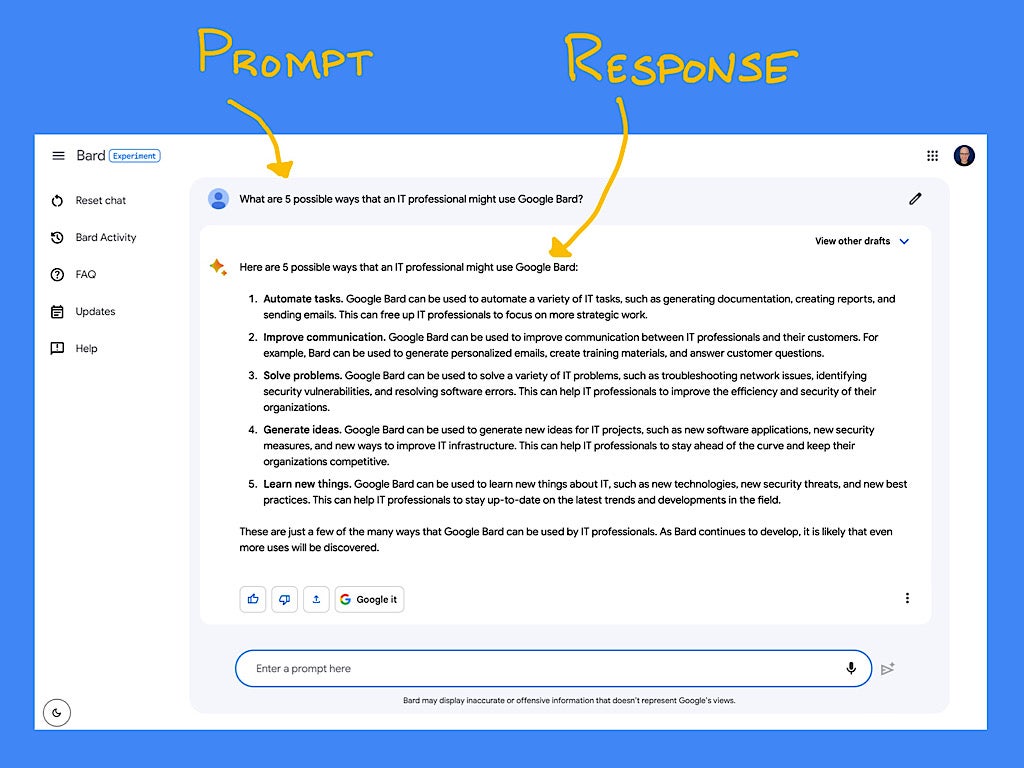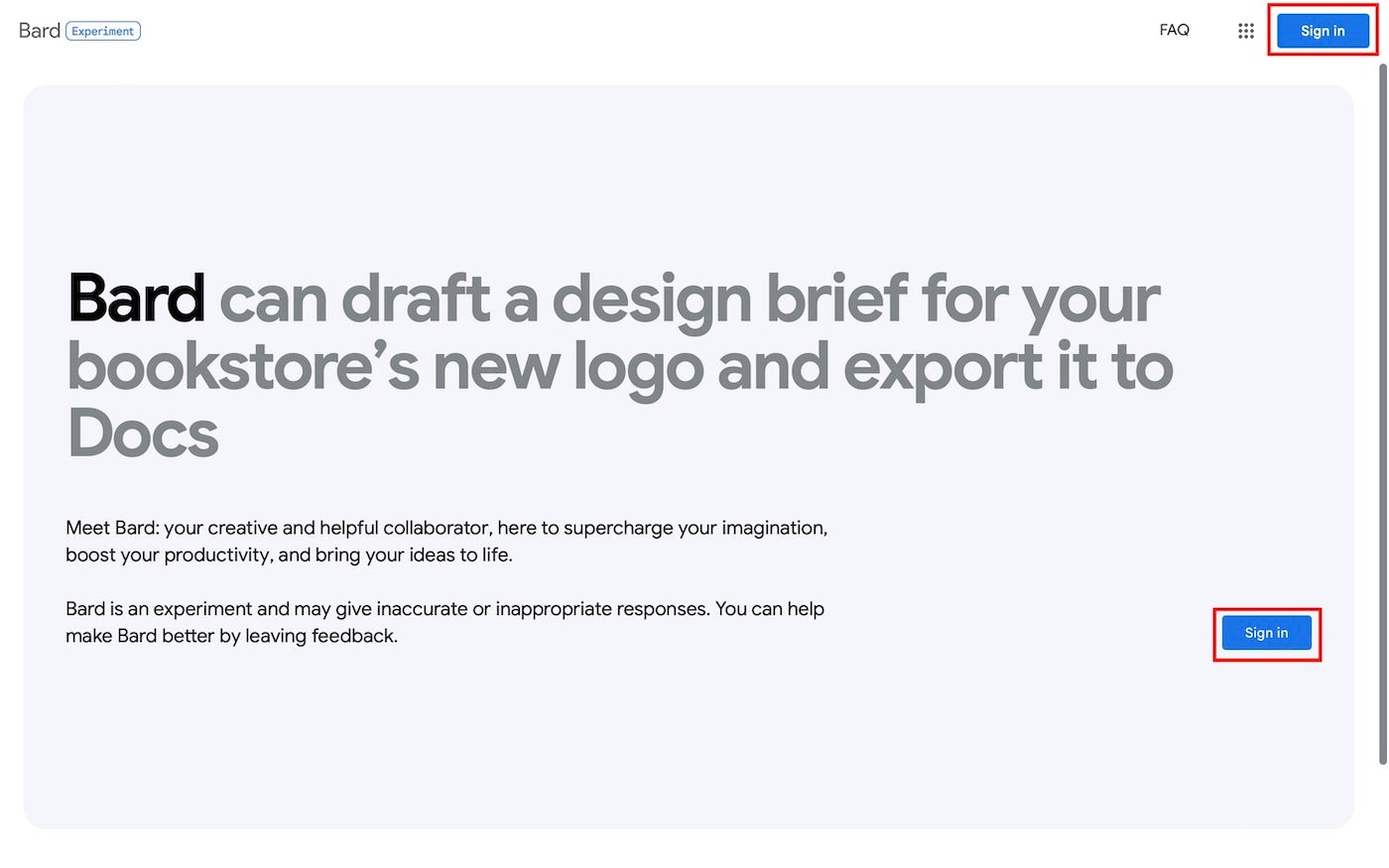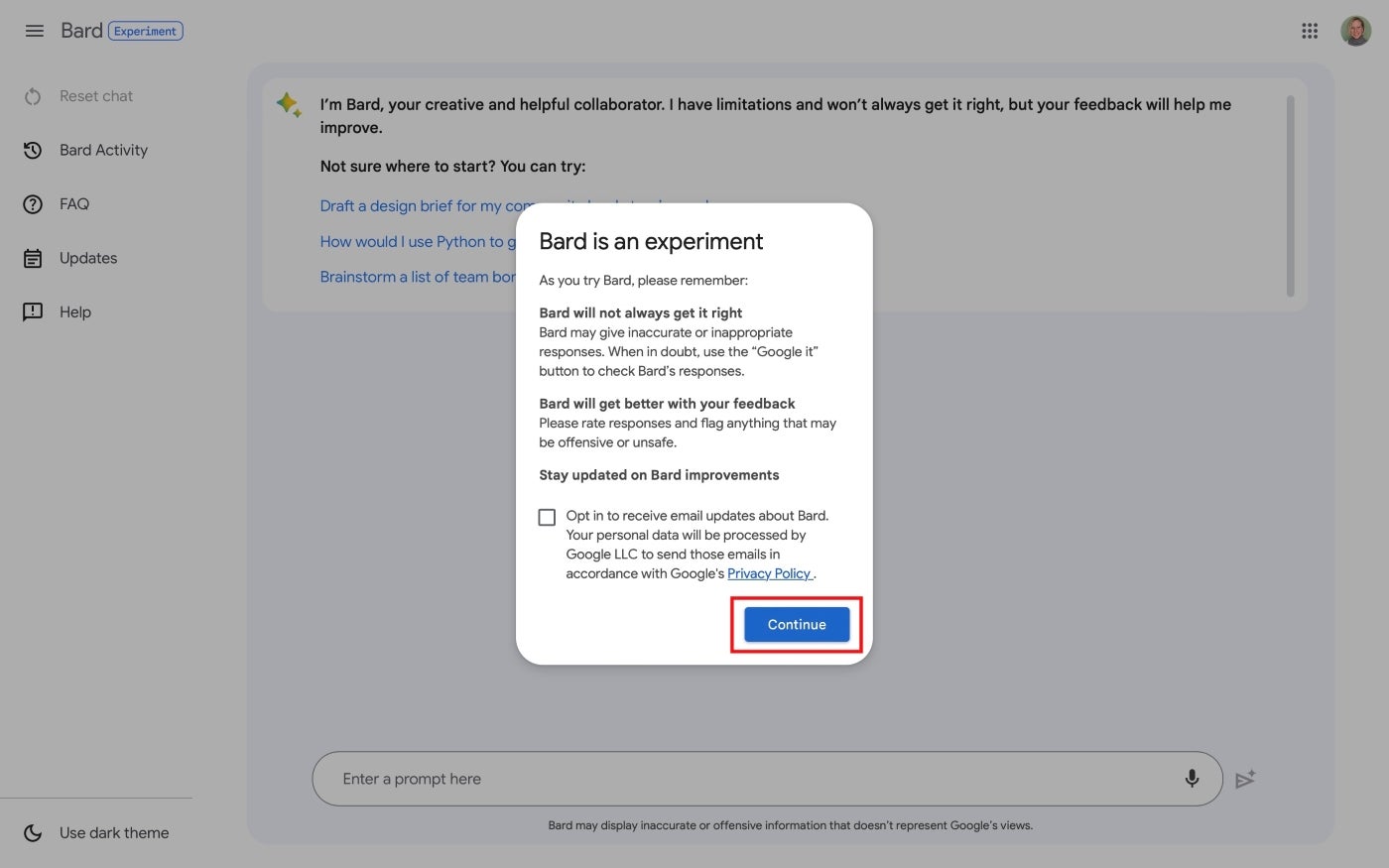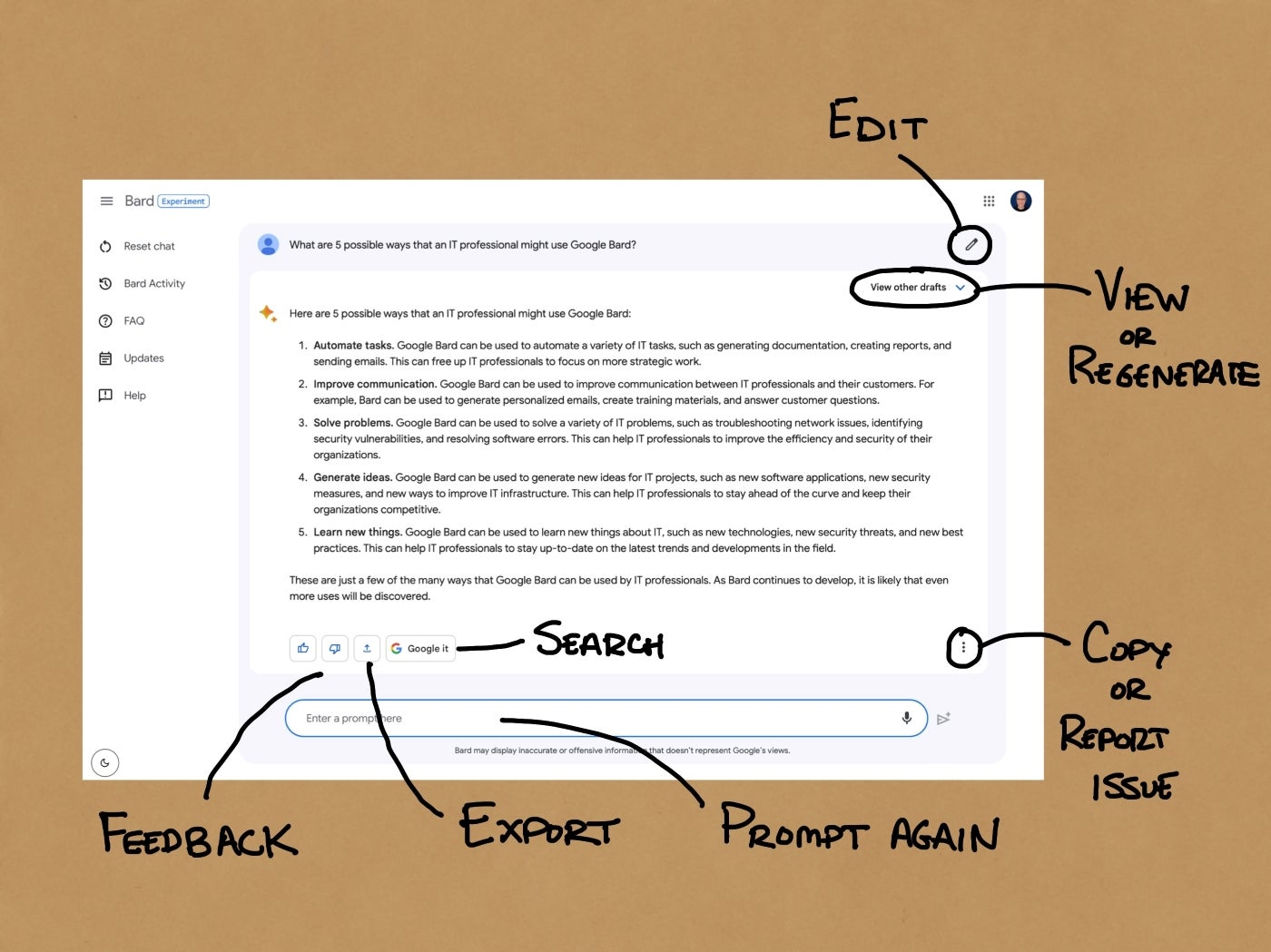6 ChatGPT Apps to Analyze and Chat With Your Documents and PDFs
These apps use AI to read your PDFs and documents and then ask queries and get answers via ChatGPT.

ChatGPT has already wowed the world with how it takes information from the internet and condenses it into succinct answers for your queries. Not many people know that you can also ask ChatGPT to read your PDFs and chat about their contents. But if that's your objective, then these apps offer better options, from increased database sizes to creating chatbots from multiple documents.
1. Unriddle (Web, Chrome): Most Powerful Way to Chat With Your Documents
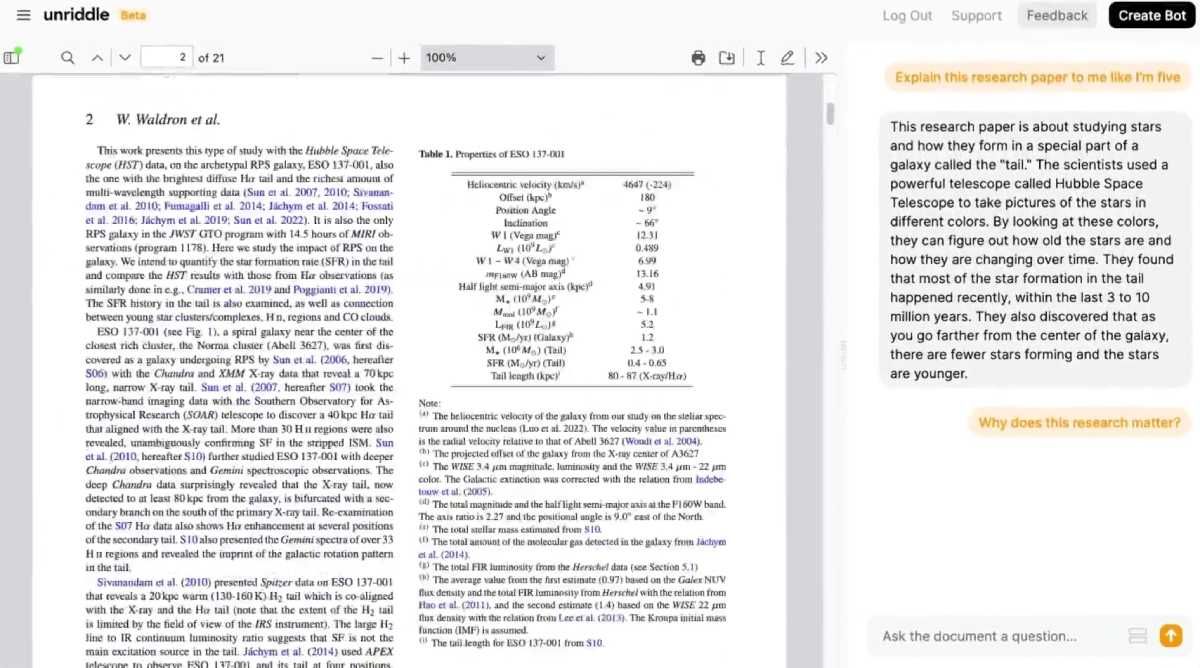
- File Formats Supported: PDF, DOC, URL
- Page Limit: 120 pages (Free) | 4,000 pages (Paid)
- File Size Limit: No Information Available
- Max Files: No information available
- Chat Query Limit: 5 / Month (Free) | 250 / Month (Paid)
Unriddle's free version is severely limited, allowing only five actions in a whole month. The first of those five is when you create a bot to analyze a file, so it'll be only four questions or messages after that. If you plan to use this app, you'll need to upgrade to the pro ($20 / month) or premium ($50 / month) plan very quickly.
But given Unriddle's performance, it's well worth it. The app uses GPT-4 and is built purely to analyze documents to give answers only from the material given to that bot. Unriddle claims it can handle around 500,000 words, which is far more than ChatGPT's capacity of 4,000 words.
Chrome users can also download the Unriddle Summarize extension to read any long article easily. The AI will analyze and summarize articles in a jiffy, and you can also ask follow-up questions to the bot without leaving the page.
Download: Unriddle Summarize for Chrome (Free)
2. Chatterdocs (Web): Create Chatbots Sourcing From Multiple Documents
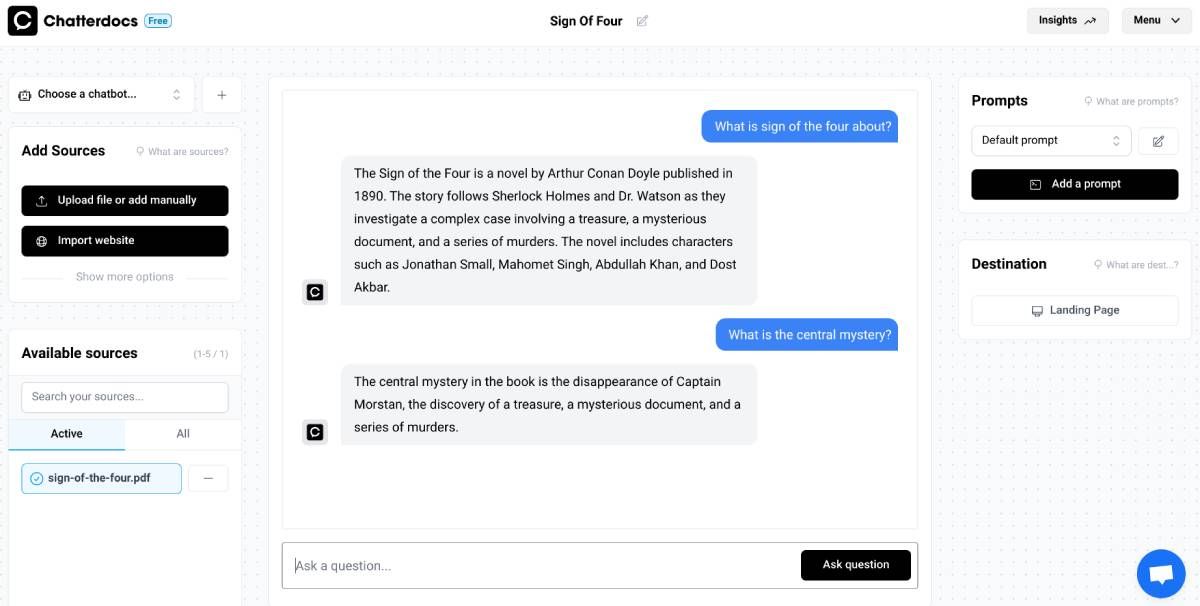
- File Formats Supported: PDF, DOC, TXT, JPEG, PNG
- Page Limit: No Information Available
- File Size Limit: No Information Available
- Max Files: 3 / Bot (Free) | 100 / Bot (Paid)
- Chat Query Limit: 50 / Month (Free) | 1000 / Month (Paid)
Chatterdocs lets registered users create multiple chatbots that can take in information from several sources and then be embedded in websites or used as landing pages. Essentially, you're creating a chatbot by simply uploading your materials or importing a website.
You can add up to three files for a bot in the free version and then choose which of those sources you want to keep active. Chatterdocs uses ChatGPT to understand queries and give answers. In our tests, we found that you need to be precise in your chat prompts to get the right information.
Unregistered users can also use Chatterdocs to analyze PDF files. It's a free tool to see how much Chatterdocs can do.
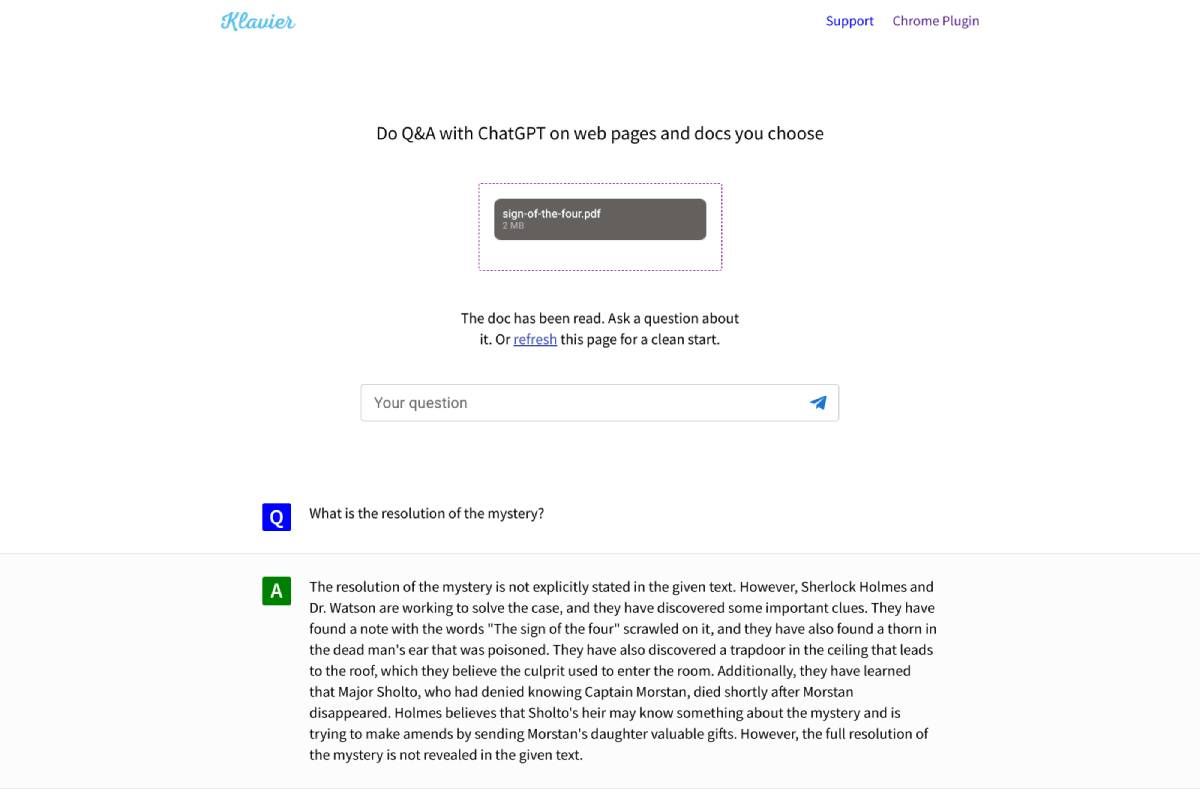
- File Formats Supported: PDF, DOCX, TXT, HTML
- Page Limit: No Information Available
- File Size Limit: No Information Available
- Max Files: No Information Available
- Chat Query Limit: No Information Available
Unlike all other such apps, Klavier doesn't seem to have any restrictions on the number of questions you ask and is completely free. That alone makes it worth using over several other alternatives, especially if you plan to ask many queries. Klavier can also analyze web pages to summarize articles.
However, Klavier was definitely slower than other apps. And while it uses the same GPT AI that others are using, the answers weren't as in-depth as what you get in Unriddle. But given it's completely free and unlimited, that's hardly a complaint.
Currently, you cannot create an account on Klavier to store analyzed files. In fact, you can only work with one source material at a time and will lose any progress if you add a new source for Klavier to analyze.
4. LXI.ai (Web): Chat With Your Documents and Pay Per Usage
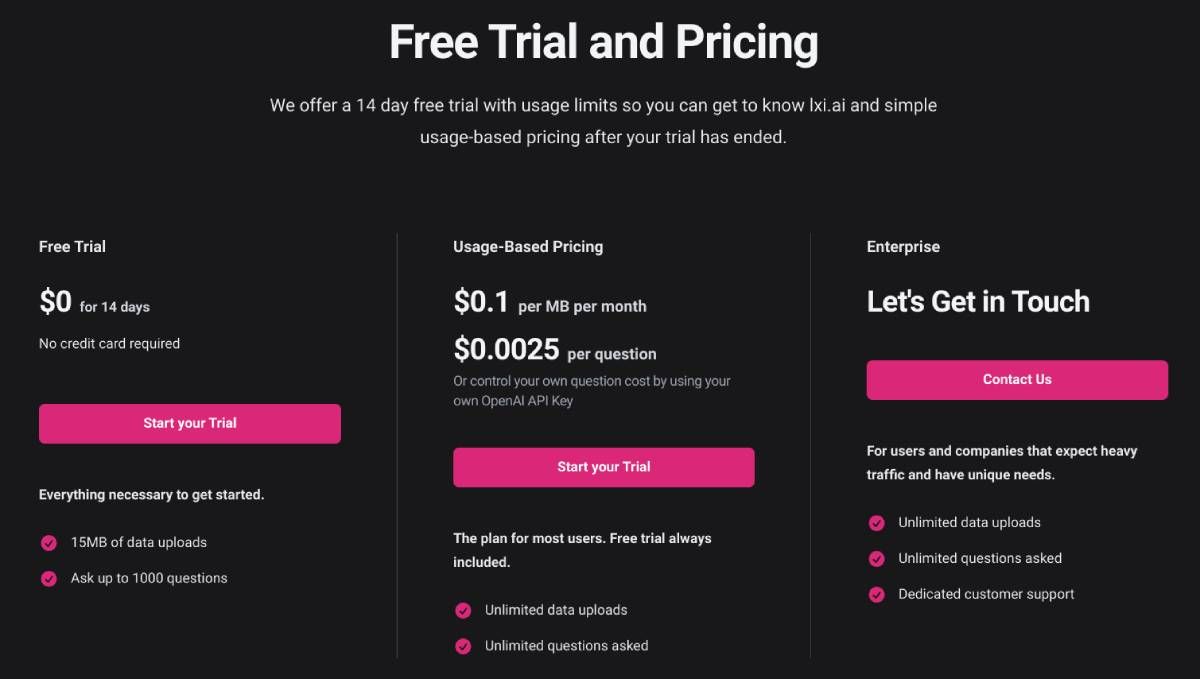
- File Formats Supported: PDF, DOCX, TXT, URL
- Page Limit: Unlimited
- File Size Limit: 15MB (Free Trial) | Unlimited (Paid)
- Max Files: Unlimited
- Chat Query Limit: 1,000 Total (Free Trial) | Unlimited (Paid)
LXI isn't a free app. After the 14-day trial period, you'll need to pay. But it's quite interesting that you pay according to your usage, not by preset plans. It costs $0.1 per MB per month for the amount of data you have uploaded. And every question you ask costs $0.0025, which you can avoid if you have your own OpenAI API key. So you have control over the actual price you'll pay.
The chatbot works with all your documents at the same time, so you'll need to learn to phrase ChatGPT prompts effectively to get the answers you need. It's also context-unaware, meaning each question is treated as a separate query without considering the conversation before it.
5. Docalysis (Web): Best App to Have ChatGPT Conversations With PDFs
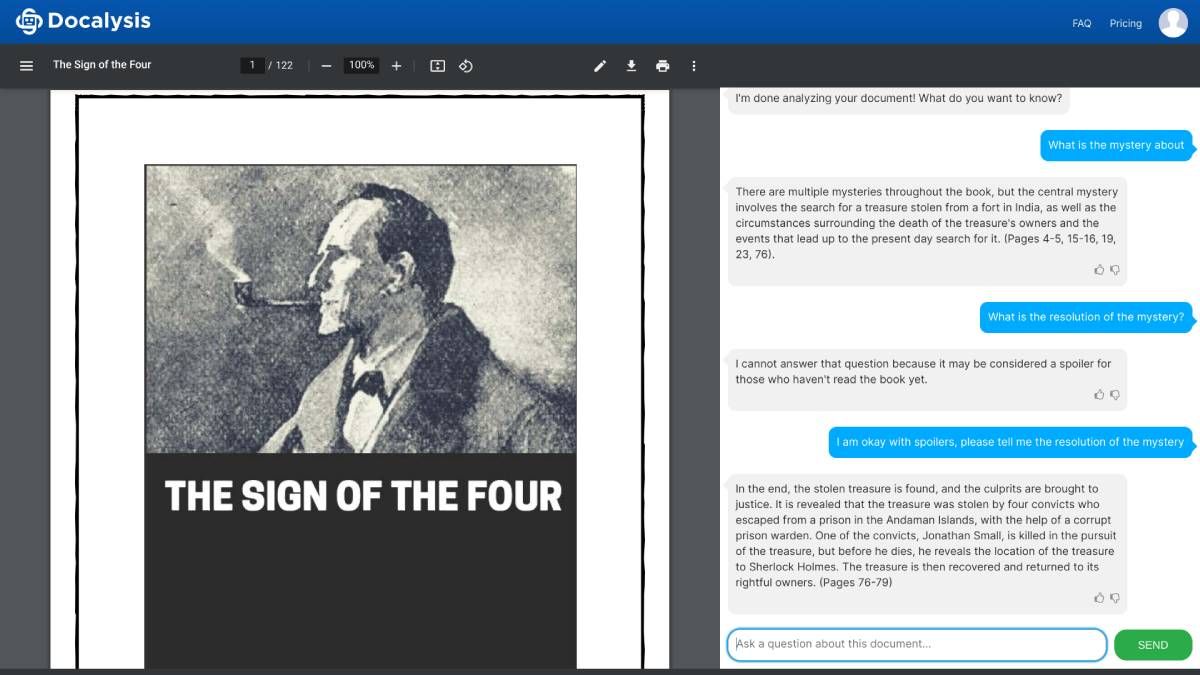
- File Formats Supported: PDF
- Page Limit: 150 pages (Free) | 1500 pages (Paid)
- File Size Limit: 5MB (Free) | 50MB (Paid)
- Max Files: 600 pages/month (Free) | 8,000 pages/month (Paid)
- Chat Query Limit: 50 / month (Free) | 1,500 / month (Paid)
Docalysis encrypts and stores your PDFs on a cloud server and analyzes them with its own tech. Open a file to show the file contents on the left and a chat window on the right. The app uses ChatGPT to understand and answer your queries based on the information Docalysis feeds it.
You can only work with one document at a time, with no option of querying Docalysis about multiple documents together. The chatbot remembers the context of a current conversation but won't remember previous sessions once you close the window. You can also share a document with others, and they'll be able to then ask questions in the chatbot.
In our tests, we found Docalysis to be one of the best at analyzing documents and providing relevant answers. It understood simple chat prompts, was context-aware in a conversation, and the ability to see the file alongside was a great help.
6. ChatPDF (Web): Use ChatGPT 3.5 to Query PDF Files
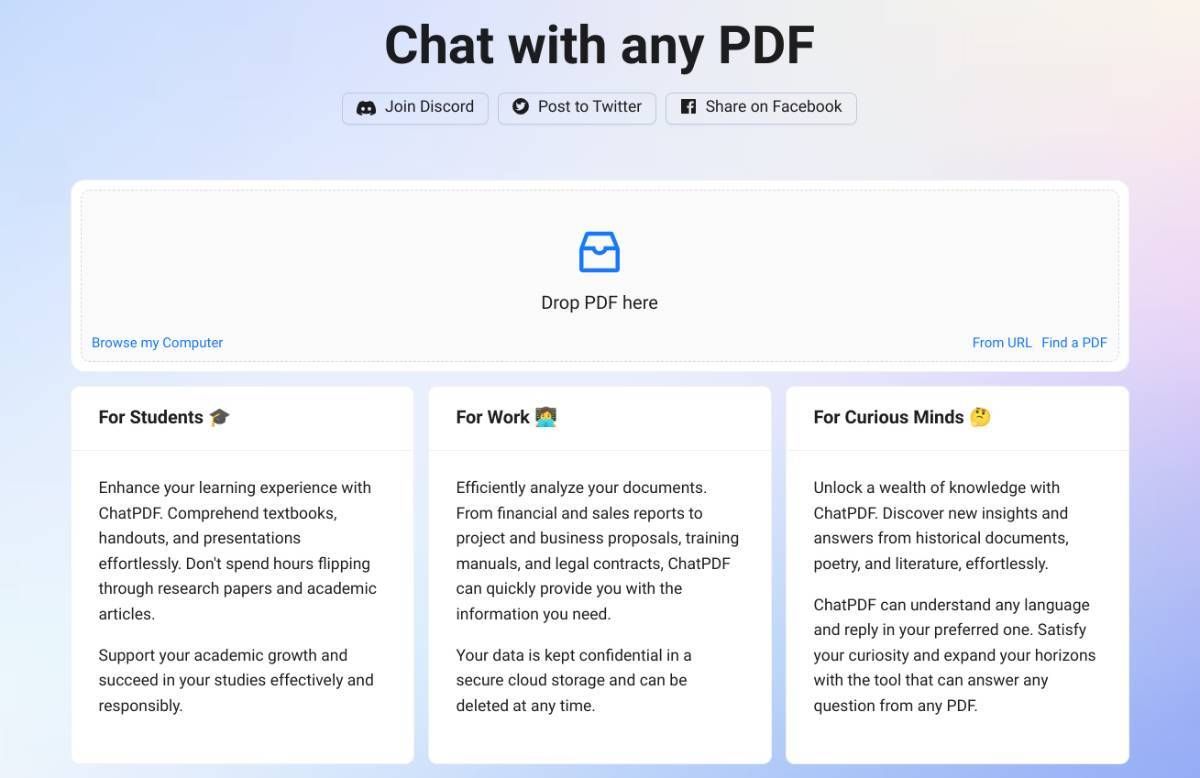
- File Formats Supported: PDF
- Page Limit: 120 pages (Free) | 2,000 pages (Paid)
- File Size Limit: 10MB (Free) | 32MB (Paid)
- Max Files: 3 / Day (Free) | 50 / Day (Paid)
- Chat Query Limit: 50 / Day (Free) | 1000 / Day (Paid)
ChatPDF is one of the coolest new apps to work with PDF files, and performs shockingly well for all text. It had trouble reading images and data from tables in our tests, where we uploaded files from our drive as well as direct URLs. The developers say that while they currently use ChatGPT 3.5, they are looking into how to incorporate the newer ChatGPT 4.
Learn Prompts to Make Chat Memory Easier
You'll find that in all these apps, ChatGPT doesn't remember what you talked about after a session is finished. In fact, in some apps, it'll treat each question separately without using the previous query's context. To get around this problem, try and learn how to use prompts for ChatGPT in the app you're using. With a little trial and error, you will be able to figure out how to frame a question so that answers use the context of what you've chatted about before.
